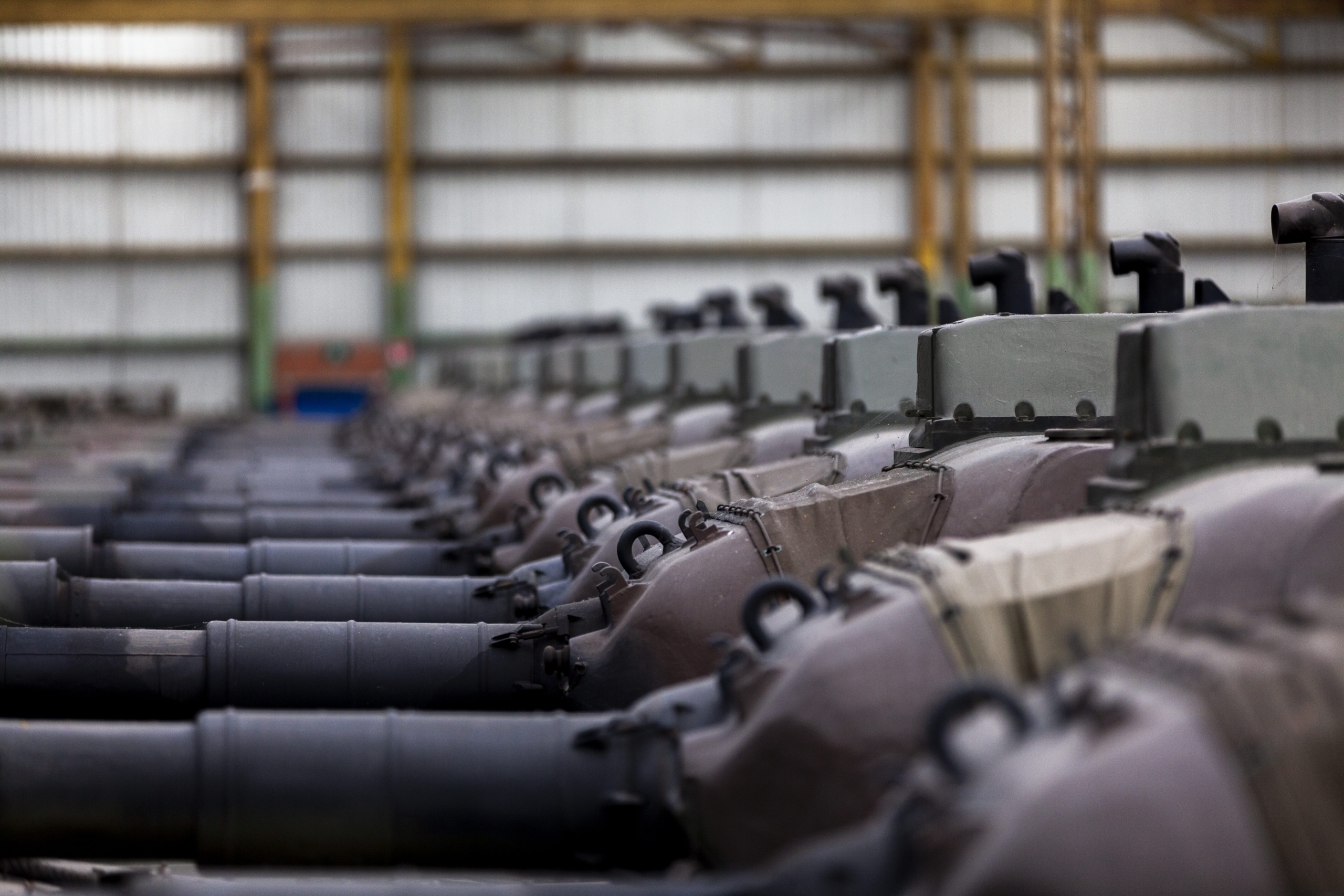- 66 Posts
- 1.98K Comments

 27·4 days ago
27·4 days agoSetting aside the specifics of the case, I do think that from a UI standpoint, cars either need to support being left in park without the climate control eventually cutting off or be so extremely clear that this will happen that it would be extremely difficult for a user to miss, as this is a legitimate example of a “fail-deadly” feature.
IIRC from reading comments from people who have slept in their car and very much want the ability to leave the climate control system active, at least some Toyota models do support leaving the climate control active for extended periods of time, but the car needs to be in “Ready” mode. It was not immediately obvious to users that this was the case.

 1·5 days ago
1·5 days agoAcquiring F-35A jets is “part of NATO’s nuclear mission”;
By March 2026, the UK will add 27 more jets: 12 F-35A and 15 F-35B;
I hadn’t been following this closely recently, but if you go back far enough, the Royal Air Force had been planning to get F-35As and the Royal Navy F-35Bs. The A variant isn’t equipped for carrier operations, which makes it not really viable for the Royal Navy, but has longer range and more payload. Then there was some discussion at one point about maybe just having both use F-35Bs to help leverage commonality, which I imagine the Royal Air Force wasn’t too keen on. Sounds like they’re back to both the A and B model.

 15·5 days ago
15·5 days agoMaybe they don’t want to move to a cloud-based system.
I don’t want a cloud-based office package, and I can imagine that the same might apply to them.

 3·7 days ago
3·7 days agoThey apparently have some temporary desalination stuff in place now to bridge the gap, dunno what it’s using.
The planned permanent plant apparently uses reverse osmosis (which, at least last time I looked, was much more widely used than distillation).
https://greencape.co.za/library/paarden-eiland-desalination-plant/
Jun 1, 2025 The planned permanent Paarden Eiland plant will be a 70 Ml/day seawater desalination plant with a multi-barrier process that will include pre-screening, dissolved air flotation, rapid gravity sand filtration, reverse osmosis, a potential advanced oxidation process, a disinfection step, stabilisation of the water, and safe brine disposal.

 4·7 days ago
4·7 days agoYeah, isn’t loading at the moment here either.
hits archive.org

 28·8 days ago
28·8 days agoCape Town apparently decided to use desalination.
Permanent desalination is planned because seawater is available all the time, whether it rains or not, so it’s more reliable than any other water source. About 97% of water on Earth is in our oceans. We can make use of this huge resource through the process of desalination, which makes it drinkable and usable for us. Although desalination is the most expensive supply option and there are environmental issues that need to be well-managed (such as the salty ‘brine’ it produces as a waste product), it is an important part of the diversified water supply ‘mix’ going forward.
Says they start construction in 2026 and expect production starting in 2030.

 36·8 days ago
36·8 days agoDonald Trump: “Enemy of God”
https://www.bbc.com/news/articles/c20g1zvgj4do
‘Anointed by God’: The Christians who see Trump as their saviour
This timeline.

 3·9 days ago
3·9 days agoI assume that it’s legal to ride a gasoline-fueled moped in the bike lane. Does this make everyone happy?

 15·9 days ago
15·9 days agoLess energy density, though.
On the other hand, maybe a less-fire-risky battery would be grounds for increasing the current 100Wh maximum that the FAA places on laptop batteries.

 5·10 days ago
5·10 days agoWhile details of the Pentagon’s plan remain secret, the White House proposal would commit $277 million in funding to kick off a new program called “pLEO SATCOM” or “MILNET.”
Please do not call it “MILNET”. That term’s already been taken.
https://en.wikipedia.org/wiki/MILNET
In computer networking, MILNET (fully Military Network) was the name given to the part of the ARPANET internetwork designated for unclassified United States Department of Defense traffic.[1][2]

 12·10 days ago
12·10 days agoProbably have better luck working on making mines that self-disarm to bound the time that they’re a danger. If states assess mines to be militarily-important — and this war has shown them to be pretty useful — they probably won’t forego them.

 32·10 days ago
32·10 days agoAlso this legitimates the tech. Just like porn and VHS, the drug cartels endorse stardink.
“Hi there! I’m José Perez. Between 2025 and 2032, I ran over two thousand tons of cocaine into the United States. And when I needed reliable, high speed Internet access to safeguard my very valuable cargo, I knew that I couldn’t settle for the second-best. I used Starlink™. Only Starlink™ gave me the peace of mind that my critical business operations would remain robust in the face of unexpected difficulties, be they hurricanes or US Coast Guard cutters. In today’s fast-paced, competitive business world, whether you need a reliable video stream to a conference room in one of your branch offices or to a night-vision piloting camera on a semi-submersible smuggling platform, you can count on Starlink™!”

 4·12 days ago
4·12 days agoYou don’t pipe salt water through the data center. You have a heat exchanger that touches the salt water.

 7·12 days ago
7·12 days agoIt takes more work to avoid salt buildup, but you can evaporate saltwater as a place to dump heat, and we aren’t gonna run out of saltwater any time soon. 'Course, only so many places have saltwater access.
EDIT: You evaporate enough water for cooling, you can increase rainfall somewhat in the local area, which boosts crop growth measurably. I remember reading an article about nuclear power plants that use evaporative cooling producing that effect.
kagis
The growing prevalence of clean energy raises the question of possible associated externalities. This article studies the effects of nuclear power plant development (and, as a result, the increased amount of water in the atmosphere from evaporative cooling systems) on nearby crop yields and finds that an average nuclear power plant increases local soybean yields by 2 and corn yields by 1 percent.

 2·13 days ago
2·13 days agoAs @papertowels@mander.xyz said.
https://en.wikipedia.org/wiki/Active_noise_control
Historically, if you were in a noisy environment, you could get closed-back, circumaural headphones — headphones that fit around your ears and had a lot of sound-absorption padding — to help soak up the sound. I still use decent non-ANC circumaural headphones at home.
There are also some people who are more-willing to tolerate discomfort than I am who get in-ear buds, which block noise in their ear canal, and on top of that, fit ear protectors intended for industrial use, like 3M X5 Peltor ear protectors, which have even more passive sound absorption stuff than current circumaural headphones do, and are even larger.
That sort of thing works well on higher frequency sound, but not as well on low-frequency stuff, like engine noise, large fans, stuff like that.
ANC basically has microphones in your headphones, picks up on what sounds are showing up at your ear, and then tries to compute and play back a sound that produces destructive interference at your ear. That is, if you look at the sound waves, where the environmental sound is low pressure, it plays back high pressure signal, and when the environmental sound is high pressure, it plays back low pressure signal. It’s not perfect, or it could make environmental sound totally inaudible. But high-end ANC headphones are pretty impressive these days. I have a pair of Sennheiser Momentum 4 headphones — good, though not the best ANC out there in 2025, and I don’t personally recommend these for other reasons — and when they kick on, the headphones are designed to have the ANC fade in; same thing happens in reverse, fades out when you flip the ANC off. It sounds almost as if fans and the like around you are powering up and down when that happens, very eerie if you’ve never experienced it before. Even the sounds that it doesn’t do so well on, like people talking, it significantly reduces in volume.
And ANC does best with the other side of the spectrum, the side that passive sound absorption doesn’t — the low-frequency stuff, especially regular sounds like fans. So having both a lot of passive sound absorption and ANC on a given pair of headphones let the two work well together.
People often use cell phones in noisy environments, with a lot of people around, and ANC makes it a lot easier to hear music or whatever without background sound interfering. I think that it’s very likely that people will, long term, mostly wind up using headphones with ANC (short of moving to something more elaborate like a direct brain interface or something). It’s not really all that important if you’re in a quiet environment, and I don’t bother using ANC headphones on my desktop at home. But if you’re in random environments — waiting a grocery store line, in a restaurant with music playing over the restaurant’s speakers, on an airplane with the drone of the airplane engines, whatever — it really helps to reduce that background sound. ANC isn’t that new. I think that I remember it mostly being billed as useful for airplane engine noise back when, which they’re a good fit for. But it’s gotten considerably better over the years. For me, in 2025, good ANC is something that I really want to have for smartphone use.
The problem is that in order to do ANC, you need at least a microphone, preferably an array, and somewhere you need to have a model of the sound transmission through the headphones and be running signal processing on the input sound to generate that output sound. In theory, you could do it on an attached computer if you had a fast data interface, but in practice, ANC-capable headphones are sold as self-contained units that handle all that themselves. So you gotta power the little computer in the headphones. That means that you probably have batteries and at least for full size headphones (rather than earbuds) you might as well stick a USB interface on them to charge them, even if the user is using Bluetooth for wireless connectivity. And if you’ve done that, it isn’t much more circuitry to just let the headphones act as USB headphones, so in general, ANC headphones tend to also be USB-capable. My Momentum 4 headphones have all of Bluetooth, USB-C, and a traditional headphones interface, but…I just haven’t really wound up using the headphones interface if I have the other options available on a given device. Might be convenient if I were using some device that only had headphones output. shrugs

 5·14 days ago
5·14 days agoIf it honestly doesn’t permit the User password to be reset, is there a “factory reset the whole BIOS” option?

 1116·16 days ago
1116·16 days agoI mean, there were legitimate technical issues with the standard, especially on smartphones, which is where they really got pushed out. Most other devices do have headphones jacks. If I get a laptop, it’s probably got a headphones jack. Radios will have headphones jacks. Get a mixer, it’s got a headphones jack. I don’t think that the standard is going to vanish anytime soon in general.
I like headphones jacks. I have a ton of 1/8" and 1/4" devices and headphones that I happily use. But they weren’t doing it for no reason.
-
From what I’ve read, the big, driving one that drove them out on smartphones was that the jack just takes up a lot more physical space in the phone than USB-C or Bluetooth. I’d rather just have a thicker phone, but a lot of people wouldn’t, and if you’re going all over the phone trying to figure out what to eject to buy more space, that’s gonna be a big target. For people who do want a jack on smartphones, which invariably have USB-C, you can get a similar effect to having a headphones jack by just leaving a small USB-C audio interface with a headphones jack on the end of your headphones (one with a passthrough USB-C port if you also want to use the USB-C port for charging).
-
A second issue was that the standard didn’t have a way to provide power (there was a now-dead extension from many years back, IIRC for MD players, that let a small amount of power be provided with an extra ring). That didn’t matter for a long time, as long as your device could put out a strong enough signal to drive headphones of whatever impedance you had. But ANC has started to become popular now, and you need power for ANC. This is really the first time I think that there’s a solid reason to want to power headphones.
-
The connection got shorted when plugging things in and out, which could result in loud sound on the membrane.
-
USB-C is designed so that the springy tensioning stuff that’s there to keep the connection solid is on the (cheap, easy to replace) cord rather than the (expensive, hard to replace) device; I understand from past reading that this was a major reason that micro-USB replaced mini-USB. Instead of your device wearing out, the cord wears out. Not as much of an issue for headphones as mini-USB, but I think that it’s probably fair to say that it’s desirable to have the tensioning on the cord side.
-
On USB-C, the right part breaks. One irritation I have with USB-C is that it is…kind of flimsy. Like, it doesn’t require that much force pushing on a plug sideways to damage a plug. However — and I don’t know if this was a design goal for USB-C, though I suspect it was — my experience has been that if that happens, it’s the plug on the (cheap, easy to replace) cord that gets damaged, not the device. I have a television with a headphones jack that I destroyed by tripping over a headphones cord once, because the headphones jack was nice and durable and let me tear components inside the television off. I’ve damaged several USB-C cables, but I’ve never damaged the device they’re connected to while doing so.
On an interesting note, the standard is extremely old, probably one of the oldest data standards in general use today; the 1/4" mono standard was from phone switchboards in the 1800s.
EDIT: Also, one other perk of using USB-C instead of a built-in headphones jack on a smartphone is that if the DAC on your phone sucks, going the USB-C-audio-interface route means that you can use a different DAC. Can’t really change the internal DAC. I don’t know about other people, but last phone I had that did have an audio jack would let through a “wub wub wub” sound when I was charging it on USB off my car’s 12V cigarette lighter adapter — dirty power, but USB power is often really dirty. Was really obnoxious when feeding my car’s stereo via its AUX port. That’s very much avoidable for the manufacturer by putting some filtering on the DAC’s power supply, maybe needs a capacitor on the thing, but the phone manufacturer didn’t do it, maybe to save space or money. That’s not something that I can go fix. I eventually worked around it by getting a battery-powered Bluetooth receiver that had a 1/8" headphones jack, cutting the phone’s DAC out of the equation. The phone’s internal DAC worked fine when the phone wasn’t charging, but I wanted to have the phone plugged in for (battery hungry) navigation stuff when I was driving.
-

 191·16 days ago
191·16 days agoSony WH-1000XM4/5/6
I don’t have one of those, but they’re pretty popular as headphones with good ANC.
Jlab Epic Air Sport ANC
I do have those, though.

















You typically need to notify other members of a treaty of your withdrawal, and then there’s some time delay until you’re no longer bound by the terms. You can’t just secretly withdraw, or treaties wouldn’t be very meaningful.
EDIT: Yeah. The submitted article says that it happens in six months from today, and here’s the treaty text on withdrawal:
https://www.un.org/en/genocideprevention/documents/atrocity-crimes/Doc.44_convention antipersonnel mines.pdf